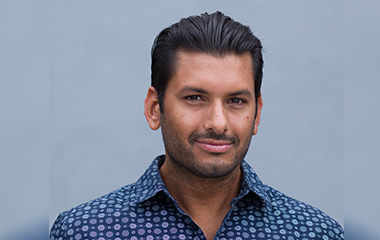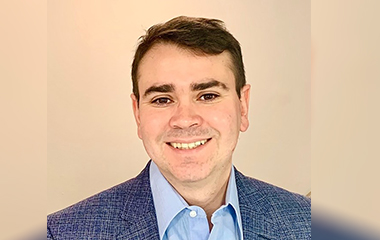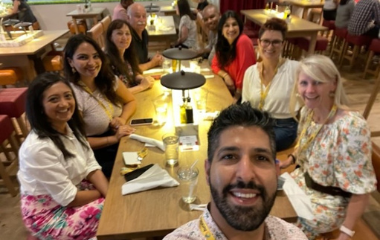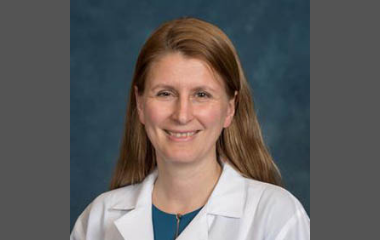Funded Projects
The AASM Foundation funds high-impact projects that are aimed at improving sleep health for all. Over the past 22 years, the AASM Foundation has invested more than $21 million in funding career development, high-impact research, clinical training and community initiatives. These cross-cutting sleep projects range from molecular mechanisms of sleep to population sleep health.
Congratulations to the recipients of our 2021 grant cycle.
2021 Bridge to Success Grant Recipients

This project will be recapitulating pediatric obstructive sleep apnea (OSA) using a preclinical murine model to understand the neurocognitive sequelae of the disease. The project team is using a top-down approach involving neurobehavior, synaptic staining and quantification, and piezoelectric field placement to help drill down which area of the brain to focus on in understanding deficits in humans. By using a preclinical model, the team hopes to be able to provide better answers for OSA in children with neurocognitive disorders.

In this project, the team is applying non-invasive ultra-high field 7T MRI to identify the locus coeruleus (LC) in cognitively normal elderly. This brain structure contributes to the sleep/wake cycle, memory processing and is also susceptible to early Alzheimer’s Disease (AD) pathology. The aim of this work is to assess the feasibility of this novel neuroimaging technique in older individuals with known sleep fragmentation/obstructive sleep apnea measures as well as AD biomarkers such as cerebrospinal fluid total-tau and amyloid beta 42.

Despite experimental and our epidemiologic data implicating sleep disordered breathing (SDB) as a clinically novel atrial fibrillation (AF) trigger, the interplay of SDB and obesity across the AF continuum remains a critical knowledge gap. The project proposes to identify SDB, obesity and metabolic determinants across AF subtypes by examining paroxysmal, persistent and longstanding persistent AF groups and matched controls with collection of innovative, state-of-the art cardiac imaging of visceral adiposity and proteomics profiles.
2021 Focused Projects Grant for Junior Investigators Recipients

Increased attention to sleep-related stimuli, or “sleep-related attentional bias” is common in insomnia. However, sleep and sex-specific mechanisms underlying this phenomenon are poorly understood. In this study, the project team will compare visual vs. auditory related attentional bias, evaluate the contributions of self-reported, actigraphic and polysomnographic sleep to these biases, and examine differences between men and women. Findings may identify sex-specific targets for behavioral insomnia intervention such as cognitive behavioral therapy or stimulus desensitization.

Circadian clocks in the retina oscillate independently and modulate entraining signals to the central circadian pacemaker. The phase and amplitude relations between the retinal and central pacemaker have not been defined in humans, while breakdowns of these relations may underlie circadian disease. The principal investigator will evaluate this hypothesis by probing and imaging how living human photoreceptors vary in sensitivity across 24-h timescales, in participants who are healthy, who have sleep phase disorders, or shiftwork disorder.

The proposed research investigates the effect of oral appliance therapy on blood pressure in OSA. Past studies on this topic show modest-to-no effect. The project team believes the source of this inconsistency is imprecise characterization of the physiological consequences of OSA, such as hypoxia or sympathetic surges. The proposed research applies two advanced metrics to identify OSA patients at risk for cardiovascular disease and investigate the effect of oral appliances on blood pressure in this group.

OSA is a common condition associated with neurocognitive impairment. This study aims to determine if the sleep apnea-specific hypoxic burden can identify individuals with OSA that have an increased risk of prevalent and incident neurocognitive impairment in two community-based cohorts, available on the National Sleep Research Resource. The expected results will provide additional information for clinicians who attend patients with OSA by incorporating this measure in the precision-medicine approach.

Sponsored by Eisai, Inc.
This project will use SOMAscan multiplex technology (SomaLogic Inc.) to profile 7,000 proteins in individuals with insomnia and age/gender-matched controls to identify novel insomnia biomarkers and develop multivariate constructs to predict insomnia phenotype based on proteomic profile. Our study will deepen the understanding of the underlying biological mechanisms of insomnia and will serve as a basis for a future multisite longitudinal study to validate biomarkers for insomnia.

Sponsored by Eisai, Inc.
Chronic insomnia has a high degree of heterogeneity, making it difficult to identify a single robust biomarker. This project proposes to use a multidimensional approach in defining chronic insomnia profiles by extracting sleep profiles characterized by a combination of subjective (sleep diaries, questionnaires) and objective (polysomnography) sleep measures using a data-driven approach from datasets of individuals with insomnia. It might explain insomnia in a holistic manner but also lead to personalized therapeutic approach for chronic insomnia.
2021 Strategic Research Grant Recipients

Insomnia is common among shift workers. However, the gold standard treatment (cognitive-behavioral therapy for insomnia, CBTI) has rarely been tested among shift workers and is not optimized for their unique schedules and challenges. This study will pilot test the feasibility and acceptability of CBTI-Shift, which adapts and personalizes CBTI for shift workers. The long-term objective of this research is to improve the sleep, health and wellbeing of shift workers using an evidence-based treatment of insomnia.

Obstructive Sleep Apnea (OSA) is associated with incident cardiovascular (CV) disease, however the impact of OSA treatment on CVD events is indeterminate. Furthermore, there is a growing body of evidence suggesting OSA may be cardioprotective. Earlier studies did not discover significant effects of CPAP treatment on CV events, probably because of heterogeneity of CPAP effect in patients with varying baseline clinical characteristics resulting in the masking of treatment effects. We therefore propose a subtyping approach using machine learning to identify subgroups of patients in the ISAACC trial that may benefit or are perhaps harmed from CPAP therapy.

Insomnia is common in adolescents, yet most insomnia treatments have been developed for adults. We propose to adapt an efficacious adult treatment (Cognitive Behavioral Therapy for Insomnia; CBT-I) for adolescents. To develop this adapted protocol (Cognitive Behavioral Therapy for Insomnia in Teens; CBT-IT), we will conduct virtual groups with key stakeholders, including adolescents, parents and providers. We will then conduct a randomized controlled trial of CBT-IT to assess its efficacy in treating insomnia in adolescents.

Despite the prevalence of insomnia among socioeconomically disadvantaged adults, few insomnia interventions have targeted this group. We will conduct a randomized trial of 64 socioeconomically disadvantaged adults with insomnia to determine the efficacy of an adapted tele-Brief Behavioral of Insomnia (BBTI). We hypothesize that compared to patients randomized to an attention-control, those randomized to BBTI will have greater improvements in insomnia symptoms at three months. This project will advance insomnia treatments for socioeconomically disadvantaged adults.

This randomized controlled trial will compare the efficacy of two remote therapeutics, namely THIM (administers Intensive Sleep Retraining) and SHUT-I (online CBT-I program), against a control condition for treating Chronic Insomnia Disorder. The study will also evaluate the combination of remote therapies (THIM followed by SHUT-I) to determine whether this novel approach leads to greater benefits than either treatment alone. The trial will inform clinical decision-making about choice of therapy and build a case for health insurance-funded remote therapy options for insomnia.

Shift workers are critical to essential all 24-hour operations; however, many never adapt to the inverted sleep-wake schedule, leading to circadian misalignment and shift work disorder (SWD). One critical barrier to treating SWD has been a lack of clinically feasible approaches to quantifying circadian misalignment. To address this, we will test the use of Apple Watch in conjunction with a consumer-oriented mobile application (SHIFT) to assess and correct for circadian misalignment in night shift workers.
2021 Diversity Supplement Grant Recipients

Despite treatment benefits, obstructive sleep apnea (OSA) remains undertreated among older adults with comorbid cardiovascular disease (CVD). This project will determine the impact of untreated OSA and quantify the effect of treatment adherence on hospitalizations and 30-day readmissions among older-adult Medicare beneficiaries with pre-existing CVD. This award will provide the grantee with a mentored research and training experience that establishes her as emerging sleep researcher and advances her skills in analyzing large claims datasets.

Circadian misalignment is associated with poorer glycemic control in young adults with type 1 diabetes. The purpose is to compare three methods to analyze circadian, sleep-wake, and glucose variability characteristics. This project will prepare the candidate for a dissertation focused on the role of the circadian system in drug polyconsumption and treatment management. Her long-term goal is to become an academic researcher with a focus on methadone maintenance treatment in Brazil.

Standard measures that quantify hypersomnolence are limited by medication effects. This project will extend prior research connecting DNA methylation of the PAX8/PAX8-AS1 gene to excessive sleep duration, utilizing a real-world sample of medicated persons with hypersomnolence. This mentored project will support the career trajectory of a talented researcher whose overarching career goal is to discover epigenetic variations that reshape early diagnostic and clinical interventions for patients with sleep and neuropsychiatric disorders.
2021 Community Sleep Health Grant Recipients

Although insomnia is common in eating disorders (EDs), many providers are not trained to treat these symptoms. The first phase of this project is to characterize ED treatment providers’ behavioral sleep medicine training and use of evidence-based treatments. The second phase is to develop and test a free web-based training for ED treatment providers on insomnia assessment and treatment. Following grant completion, our team will make the SLEEP-E training publicly available.

Cross-cultural fluency and adaptive thinking are critical for thriving in a global university and workforce. But, with travel restrictions, students are too tired to reach their potential because the international courses and immersion they seek happen during the middle of their night. Therefore, we will deliver “shift work education” workshops grounded in powerful, evidence-based strategies for night shift workers to help students effectively adapt their sleep and elevate their performance in any global context.

Low-resource individuals are at increased risk for sleep disorders, including sleep disordered breathing, but have traditionally been excluded from standard-of-care evaluation and treatment due to lack of infrastructure for the provision of testing, CPAP devices, and supplies to uninsured populations. CHI-PAP entails a 4-phase care process model for bridging these types of gaps in sleep health among low-resource patients receiving care at CommunityHealth, a well-established free clinic on Chicago’s Near-West Side.
Gilles Frydman
American Sleep Apnea Association
Sleep Apnea Disaster Preparedness Campaign
During February 2021, exceptionally cold weather caused millions of people in Texas to lose electrical power for several days. Through video interviews, ASAA proposes to document the still-fresh, first-hand stories of people in the Rio Grande Valley who were not able to use their therapy during the Texas power outage. ASAA will conduct video interviews with six residents of the RGV to develop a powerful bilingual (English and Spanish) multi-media public awareness campaign around disaster preparedness for sleep apnea patients. Such guidance will assist patients to plan ahead for disasters, mitigating negative health impacts and possibly saving lives.
2021 AASM Foundation and CHEST Foundation Research Grant in Sleep Medicine Recipient

2021 Sleep Medicine Fellow Funding Grant Recipient

2021-2022 SOAR Fellows





2021 AMA Foundation Physicians of Tomorrow Scholarship Recipient


